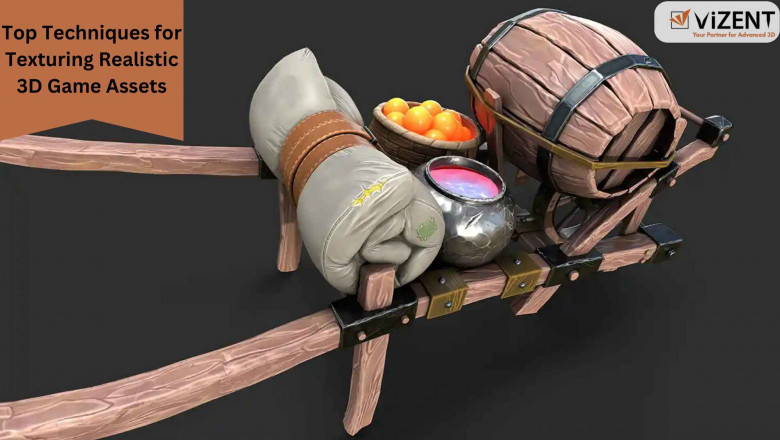views
Creating realistic 3D game assets is no small feat. Whether you're designing intricate weapons, lifelike characters, or immersive 3D game environments, texturing plays a pivotal role in bringing those assets to life. Proper textures not only enhance the visual appeal but also provide depth, making the virtual world feel believable. Let’s dive into the top techniques for texturing realistic 3D game assets, helping you create stunning results that will stand out in 3D modeling games.
1. Start with High-Quality UV Mapping
UV mapping is the backbone of texturing. Ensure your UV map is well-organized, clean, and free of stretching or overlapping. A properly laid-out UV map will allow your textures to align seamlessly with your game assets, enhancing the overall realism. Tools like Blender, Maya, and 3ds Max can assist in generating efficient UV layouts.
Tip:
When unwrapping, maintain a consistent texel density for your 3D game environments to ensure textures look uniform across assets.
2. Leverage PBR Texturing for Realism
Physically Based Rendering (PBR) has become the industry standard in gaming. It simulates how light interacts with surfaces in the real world. By using PBR texturing, you can achieve realistic reflections, shadows, and material details. PBR workflows generally involve textures like:
- Albedo (Base Color)
- Roughness/Glossiness
- Metalness
- Normal Maps
Using software like Substance Painter or Quixel Mixer, you can fine-tune these maps to create lifelike textures for your 3D modeling games.
3. Use Procedural Textures for Efficiency
Procedural texturing involves creating textures algorithmically rather than manually painting them. Tools like Substance Designer allow you to generate textures like wood, stone, or metal procedurally. This technique is not only time-saving but also ensures scalability, especially for large 3D game environments.
4. Incorporate Normal and Height Maps
Normal and height maps add depth and detail to your textures without increasing the polygon count of your game assets. They are particularly effective for simulating fine details like cracks, engravings, or fabric weaves. Normal maps alter the way light interacts with the surface, creating the illusion of depth, while height maps can be used in displacement workflows for more pronounced effects.
5. Use Real-World References
Nothing beats studying the real world when trying to create believable 3D game environments. Whether you're designing a medieval castle or a futuristic spaceship, gather references to analyze material properties like texture, color, and wear patterns. Tools like PureRef can help organize your reference library for easy access during the texturing process.
6. Add Imperfections for Authenticity
Perfection can break immersion. To make your textures feel realistic, incorporate imperfections like scratches, stains, dust, or rust. These details bring life to 3D modeling games, as they mimic the wear and tear found in real-world objects. Tools like Substance Painter offer pre-made brushes and masks to apply these imperfections efficiently.
7. Bake Ambient Occlusion and Light Maps
Ambient occlusion (AO) maps simulate subtle shadowing in crevices and areas where light is naturally blocked. Baking AO maps onto your textures adds a layer of realism to your game assets. Similarly, baked light maps can simulate realistic lighting for static objects, saving computational resources in real-time rendering.
8. Optimize Texture Resolutions
While realism is crucial, performance should not be compromised. For 3D modeling games, ensure that your textures are optimized for the platform you’re targeting. Use tools like Mipmaps to scale textures dynamically based on distance, and compress textures using formats like DDS to reduce file sizes without significant quality loss.
9. Experiment with Layering
Layering textures allows you to create complex materials by combining different maps. For instance, you can layer dirt over a metal texture to simulate weathering. Most texturing tools, including Photoshop and Substance Painter, support layering, giving you control over how textures interact and blend.
10. Test Textures in Real-Time Engines
Before finalizing your textures, test them in a real-time engine like Unity or Unreal Engine. These engines provide instant feedback on how your game assets look under different lighting conditions and environments. Testing ensures that your textures not only look good but also perform well in the game.
Conclusion
Mastering texturing is essential for creating realistic 3D game assets that elevate the gaming experience. By following these techniques—whether it's leveraging PBR workflows, using procedural textures, or adding imperfections—you can craft assets that captivate players and enhance immersion. Remember, practice and experimentation are key to honing your skills in texturing for 3D modeling games.






















Comments
0 comment